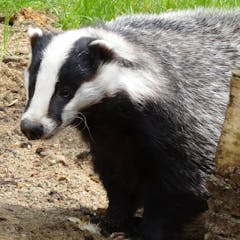
Articles on Axa Research Fund (English)
Displaying 21 - 40 of 104 articles

Preliminary research finds that India’s high growth rate has failed to trickle down to society’s marginalised communities, with caste, gender and background still dictating life chances.

While many progressive movements have organised online, conservatives dominate because of better organisation, capital, and social inequality. France’s presidential elections are a case in point.

Covid has led to delays in consumers receiving everything from furniture to groceries. This is how we might reshape supply chains after the pandemic.

As we face the rise and rise of the Omicron variant, your risk of getting severe Covid may depend on how stressed you are. Now is a great time to look after your mental health.

Mountain ecosystems are not as pristine as we may think – and climate change could trigger devastating transformations that will affect us all.

Using data from the popular navigation app, researchers have pinpointed the areas of Lagos, Nigeria, where emergency obstetric care is most needed.

As we look beyond a world besieged by Covid-19, the relationship between humans and nature in our cities must be shaped and reclaimed.

New research shows that people who suffer from mental disorders earlier in life were more likely to subsequent develop physical diseases, age faster, and also die earlier than those who did not.

Advanced techniques allowed our research team to build an open database of billions of individual trees and challenge some common perceptions about vegetation in arid and semi-arid zones.

Dust storms are not unusual, but intense ones have a wide range negative impacts upon multiple socioeconomic sectors. How do we address them?

An ecologist describes her field research and work on the impact of human activity on birds and their pathogens, which has taken her from Alaska to the Gulf of Guinea.

According to a study conducted in collaboration with the Nobel laureate in economics, Lars Peter Hansen, decision theory is an effective tool for finding the best trade-offs.

Cybersecurity risks are evolving rapidly. How can they be more effectively assessed and managed ?

We think of mountains as remote and little affected by human activity. Unfortunately, the negative impacts of what we do has important implications for nature, wildlife and human society.

Bubbles sinking, oceans levitating… It may seem straight out of science fiction, but it can be done in a laboratory.

The SARS-CoV-2 virus at the origin of the Covid-19 pandemic is one ten-thousandth of a millimeter in diameter. How can such a microscopic organism have such an immense impact on global health?

A new study explores the challenges that pregnant women in megacities such as Lagos face in emergency situations and how the options vary depending on their socioeconomic status.

Understanding fire history is crucial to designing effective fire management in order to maintain biodiversity and support the livelihoods of people.

All animals plays a role in nature, and in times of biodiversity loss and climate change, hunting “common” species such as foxes and badgers is irresponsible .

After the Covid-19 pandemic, we must seize the opportunity to make urban centers more livable places by investing in affordable housing, basic services, clean energy and active transport.
